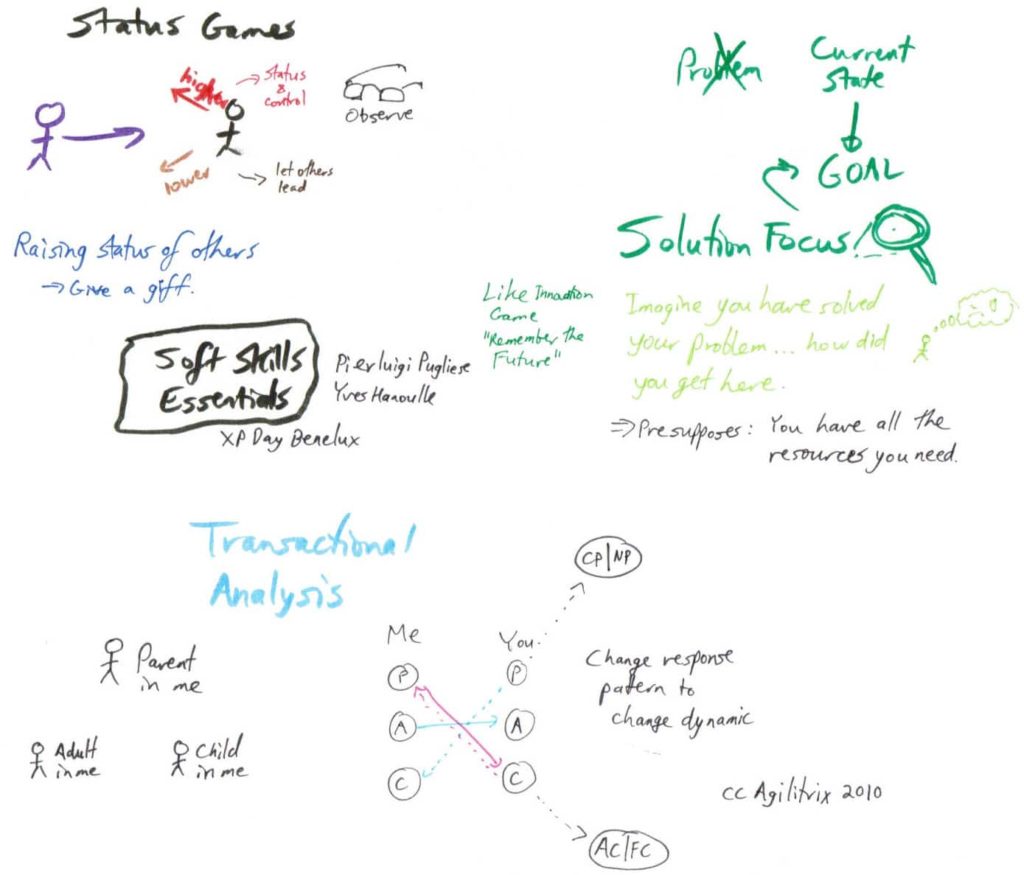Pierluigi Pugliese and Yves Hanoulle gave a great session on Soft Skills Essentials for anyone working in a team (hint: everyone). The session covered three communication models: Status Games, Solution Focus and Transactional Analysis (see diagram below).

Status Games is a modeling technique that comes from Improv theatre. They are all about power and dominance. When we communicate we can raise or lower the status of others by implying something positive or negative.
Here is a quick example.
Statement: “I just finished my part.”
Status lowering response: “Well, I’m glad we are all finally done.” (Implication is that the person was last and they were holding things up)
Status raising response: ‘Great, we can only succeed as a team.” (Implication is that everyone is important).
I need to learn more about this.
Solution Focus
The principle of solution focus is that it is often more valuable to focus on the solution than on the problem. This principle is counter intuitive and is contradictory to other approaches such as root cause analysis and Diagram of effects. I think about the latter tools as useful for analysis, while solution focus is useful for generating solutions.
Solution focus is deceptively simple:
- Image that you are in the future and have already solved your problem.
- Think about how it was that you got there.
This perspective is useful in unlocking the series of steps that need to be accomplished to achieve the goal.
Solution Focus is very similar to the approach used in the InnovationGame® Remember the Future for defining what a product should do.
As I was reading more, I discovered that this comes from solution focussed brief therapy. Reminds me of my NLP tools and training. I am wondering how to share them.
Transactional Analysis
The work of Virginia Satir on family dynamics can be used to understand how we communicate with others. With this model we choose one of three roles when communicating: Parent, Adult, or Child. The example illustrated in pink is that if we communicate as parent to child then we will elicit a child to parent response.
The idea here is that by changing our response, we can change the dynamic of the conversation to get the result that we want. I think I need to learn more and play with this to get a better sense of this technique. Maybe I will just observe life and take notes from this perspective.
Please see WikiPedia for more on Transactional Analysis.
Slides and further reading
You can see slides and further reading/links on Pierluigi’s blog.


